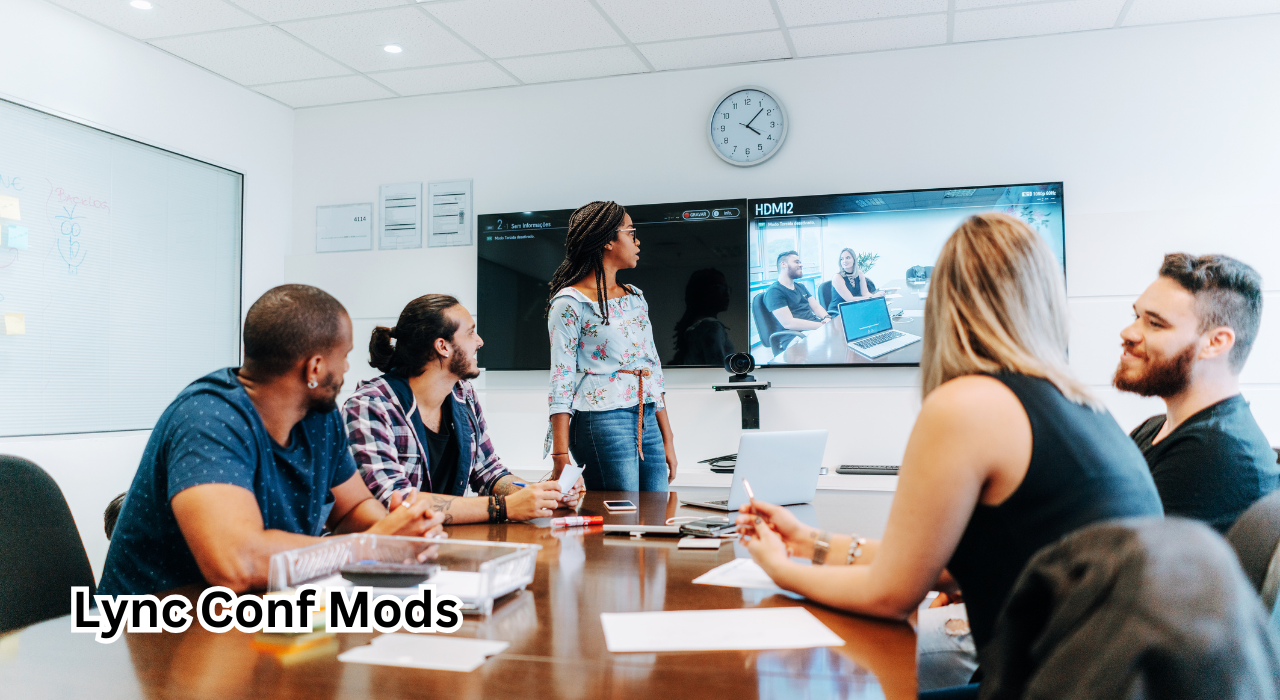Understanding Lync Conf Mods: Enhancing Communication and Collaboration

Microsoft Lync, now part of Microsoft Teams, was a widely used unified communications platform that enabled businesses to manage instant messaging, voice calls, video conferencing, and online meetings. One of its key features was Lync Conf Mods, which allowed users to customize and optimize their conference experience. These modifications (mods) enhanced communication efficiency, improved security, and introduced additional functionalities for a seamless collaboration experience.
What Are Lync Conf Mods?
Lync Conf Mods refer to custom settings, configurations, and third-party add-ons that improve the functionality of Microsoft Lync conferences. These modifications include:
- Custom Meeting Policies – Administrators could define policies to control participant actions, such as who could present, share their screen, or mute others.
- Security Enhancements – Adding encryption, authentication layers, and access controls to protect sensitive information.
- Third-Party Integrations – Integrating Lync with CRM systems, project management tools, and email clients to streamline workflows.
- Audio and Video Quality Improvements – Modifying bandwidth settings, codecs, and network prioritization for a better conferencing experience.
- Automated Attendance and Recording – Configuring meetings to automatically log attendees and record sessions for future reference.
Benefits of Using Lync Conf Mods
- 1. Improved User Experience
With tailored settings, users could enjoy a more intuitive and efficient communication environment, reducing disruptions during meetings.
- 2. Enhanced Security
Mods allowed IT administrators to enforce stricter security measures, ensuring only authorized individuals accessed meetings.
- 3. Increased Productivity
By integrating third-party applications and automating administrative tasks, businesses saved time and optimized their workflow.
- 4. Better Compliance and Data Retention
Organizations in regulated industries could ensure compliance by modifying Lync to store meeting records and track communications.
How to Implement Lync Conf Mods
- Step 1: Assess Business Needs
Identify the pain points in your current Lync setup and determine what modifications can address them.
- Step 2: Use PowerShell Commands
Lync Server Management Shell allowed administrators to configure various settings via PowerShell, such as:
powershell
CopyEdit
Set-CsMeetingConfiguration -EnablePstnDialInConferencing $true
This command enables PSTN dial-in conferencing for users.
- Step 3: Leverage Third-Party Tools
Explore add-ons that integrate seamlessly with Lync for enhanced scheduling, reporting, and security features.
- Step 4: Test and Monitor
Deploy changes in a test environment before rolling them out organization-wide. Use monitoring tools to track performance and resolve issues promptly.
Enhancing Security and Compliance in Lync Conf Mods
Microsoft Lync was widely used for enterprise communication, offering instant messaging, voice, video, and conferencing features. To ensure secure and compliant meetings, organizations implemented various Lync Conf Mods to enhance security and meet regulatory requirements. These modifications protected sensitive data, enforced access controls, and ensured compliance with industry standards.
Key Security Enhancements
- 1. Encrypted Communication
To protect conference data, Lync supported TLS (Transport Layer Security) and SRTP (Secure Real-time Transport Protocol) encryption. Admins could enforce encryption for all audio, video, and instant messaging sessions to prevent unauthorized interception.
PowerShell Command Example:
powershell
CopyEdit
Set-CsMediaConfiguration -EncryptionLevel RequireEncryption
This command ensures that all communication is encrypted, reducing the risk of eavesdropping.
- 2. Multi-Factor Authentication (MFA)
Enabling MFA added an extra layer of security, ensuring that only authorized users could join or manage conferences. Lync could integrate with Active Directory and Azure AD for MFA enforcement.
- 3. Role-Based Access Control (RBAC)
Organizations used RBAC to restrict meeting controls based on user roles. This prevented unauthorized users from muting participants, sharing screens, or altering meeting settings.
Example Policies:
- Presenter-Only Controls – Only designated presenters could share content.
- Lobby Restrictions – External users had to be manually approved before joining.
- 4. Secure Meeting Links and Invitations
To prevent unauthorized access, admins could generate unique, one-time-use meeting links and restrict sharing.
PowerShell Command to Disable Public Meeting Access:
powershell
CopyEdit
Set-CsMeetingConfiguration -DesignateAsPresenter “OrganizerOnly”
This ensures that only the organizer can control presenter settings, reducing security risks.
Compliance Enhancements
- 1. Meeting Recording Policies
Organizations could enforce automatic meeting recording and store files in a secure repository for auditing purposes. This was crucial for industries like finance and healthcare.
Example Configuration:
powershell
CopyEdit
Set-CsConferencingConfiguration -EnableRecording $true
This enables recording for compliance and legal requirements.
- 2. Data Retention and E-Discovery
Lync could integrate with Microsoft Exchange and SharePoint to archive conversations and meeting data, ensuring compliance with regulations like GDPR, HIPAA, and SOX.
Features:
- Chat History Logging – Automatically saves conversations for auditing.
- E-Discovery Tools – Helps in retrieving past communications for legal or compliance reviews.
- 3. Secure File Sharing Controls
Admins could restrict file transfers to internal users only and block specific file types to prevent malware spread.
Example PowerShell Command:
powershell
CopyEdit
Set-CsFileTransferFilterConfiguration -EnableFileTransfer $false
This disables file transfers within Lync conferences for security purposes.
Optimizing User Experience with Lync Conf Mods
Microsoft Lync provided a powerful platform for enterprise communication, offering voice, video, and online meetings. However, organizations often sought to enhance the user experience (UX) through Lync Conf Mods, which introduced customizations for a more seamless, efficient, and engaging collaboration environment.
By implementing these modifications, businesses improved usability, reduced technical issues, and optimized productivity. Below are some key enhancements that significantly improved the Lync conference experience.
- 1. Improved Audio and Video Quality
a. Optimized Bandwidth Usage
Admins could fine-tune QoS (Quality of Service) settings to prioritize Lync traffic, ensuring high-quality audio and video even in bandwidth-constrained environments.
Example PowerShell Command:
powershell
CopyEdit
Set-CsMediaConfiguration -EnableQoS $true
This command ensures voice and video traffic receive priority over other network activities.
b. HD Video Conferencing Support
Lync allowed adaptive video resolution, adjusting quality based on bandwidth availability. Users could enable 1080p HD conferencing for a more immersive experience.
- 2. Simplified Meeting Access and Scheduling
a. One-Click Meeting Join
Instead of lengthy URLs and complex login steps, Lync mods enabled one-click access via Outlook, desktop apps, and mobile devices.
b. Personalized Meeting Invitations
Customizable meeting invites made it easier for participants to access important details (e.g., agenda, dial-in numbers, links to documents, etc.).
Example Enhancement:
- Pre-defined templates for meeting invitations.
- Custom branding with company logos and themes.
- 3. Interactive and Engaging Meetings
a. Smart Presenter Controls
Lync Conf Mods allowed presenters to:
- Mute/unmute all attendees with a single command.
- Lock the meeting to prevent disruptions.
- Highlight speakers for better visibility.
Example PowerShell Command to Auto-Mute Participants on Entry:
powershell
CopyEdit
Set-CsMeetingConfiguration -EntryExitAnnouncements $false
This prevents interruptions from late joiners.
b. Virtual Whiteboards and Annotations
Users could share digital whiteboards, allowing for real-time brainstorming and visual collaboration.
c. Polling and Q&A Sessions
Lync enabled live polls and Q&A features, increasing participant engagement and feedback collection.
- 4. Cross-platform compatibility and Mobile Optimization
a. Seamless Mobile Integration
With mobile-friendly Lync Conference Mods, users could:
- Join meetings via the Lync mobile app on iOS, Android, and Windows.
- Use VoIP or cellular networks based on availability.
- Receive push notifications for upcoming meetings.
b. Browser-Based Meetings (Web App Support)
For users without the Lync Conf Mods client, the Lync Web App offered browser-based access, eliminating the need for software installations.
- 5. Automated Meeting Management and Smart Notifications
a. Automated Meeting Reminders
Admins could configure reminders via email or push notifications, ensuring attendees never missed important meetings.
b. Auto-Recording and Transcriptions
- Meetings could be automatically recorded for future reference.
- AI-powered transcriptions helped with documentation and accessibility.
Conclusion
Lync Conf Mods played a crucial role in transforming virtual meetings by improving functionality, security, and overall user experience. While Lync Conf Mods has evolved into Microsoft Teams, many of these modifications and best practices remain relevant for modern conferencing solutions. Organizations looking to optimize virtual meetings should explore similar configurations in Microsoft Teams or other unified communication platforms.










